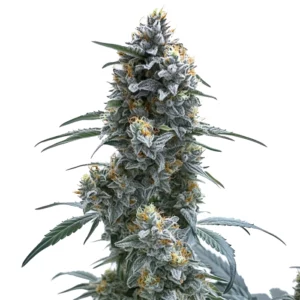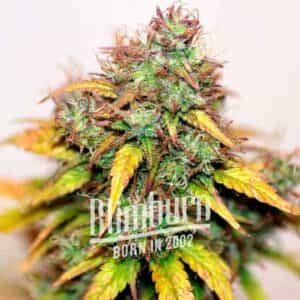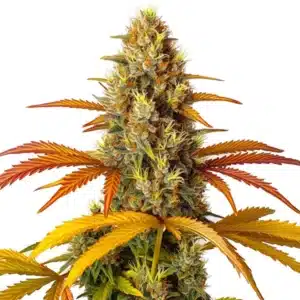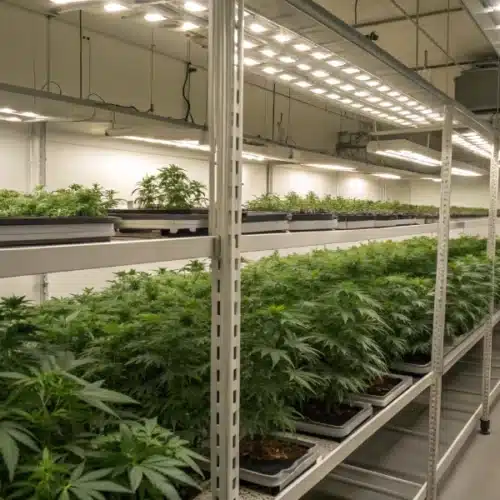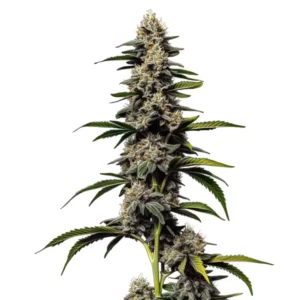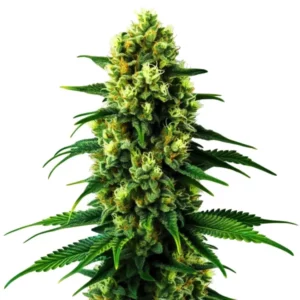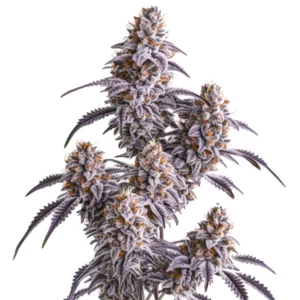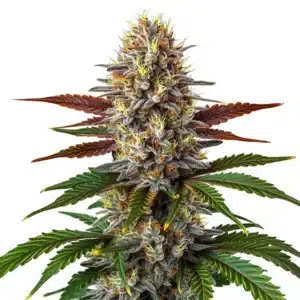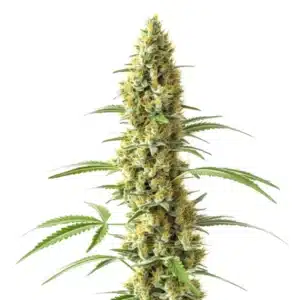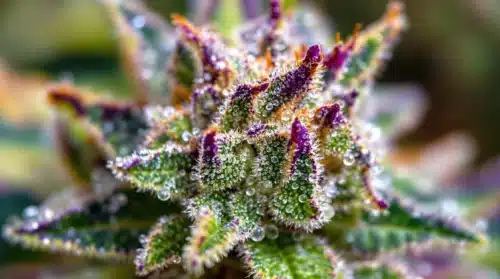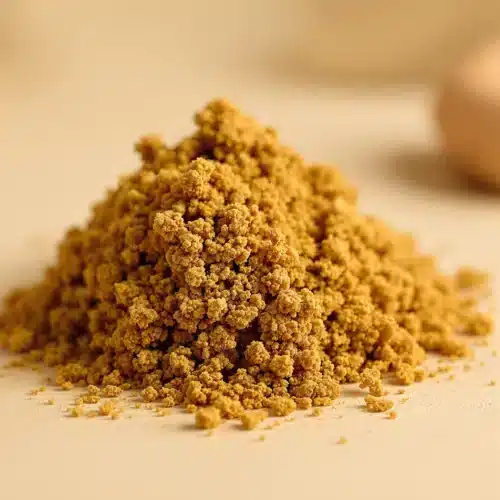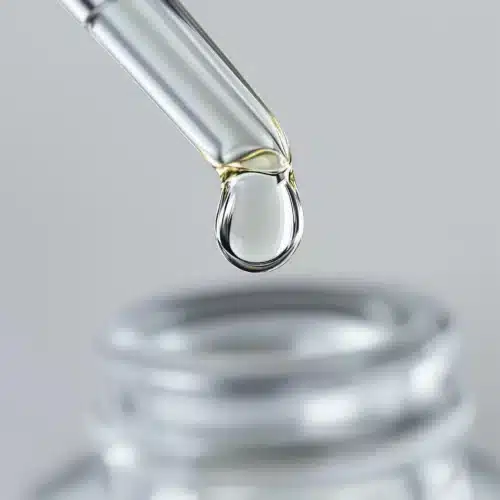Cultivating marijuana starts from the very basic yet crucial stage: the seedling phase. This initial step sets the foundation for the health, strength, and yield of your plants. How to care for weed seedlings effectively can dramatically impact their survival and overall growth. This comprehensive guide offers all you need to know to ensure your young cannabis plants flourish.
If you want to know more about weed seedling you can see this interesting article as well.
Seedling Stage of Weed
What is the Seedling Stage?
The seedling stage begins once the cannabis seed’s shell breaks open and exposes its root. This stage is critical as the young plant is very delicate and requires careful attention to thrive. It’s a period of significant vulnerability but also tremendous growth, where proper care can set the stage for a healthy life cycle.
Key Characteristics of Healthy Weed Seedlings
Healthy weed seedlings should have a bright green color and sturdy stems. The appearance of the first set of true leaves, not to be confused with the smaller cotyledon leaves that initially emerge, is a good indicator of health. These seedlings should be free from drooping and yellowing, which can be signs of distress.
The Importance of Proper Light, Water, and Temperature
Light is essential for photosynthesis, and seedlings require 16-20 hours of light each day. Watering should be moderate—enough to keep the soil moist but not soaked. Temperature should be maintained between 20-25°C (68-77°F) for optimal growth. These factors together create an environment conducive to healthy seedling development.
Promos & Deals
Seedling Stage Weed
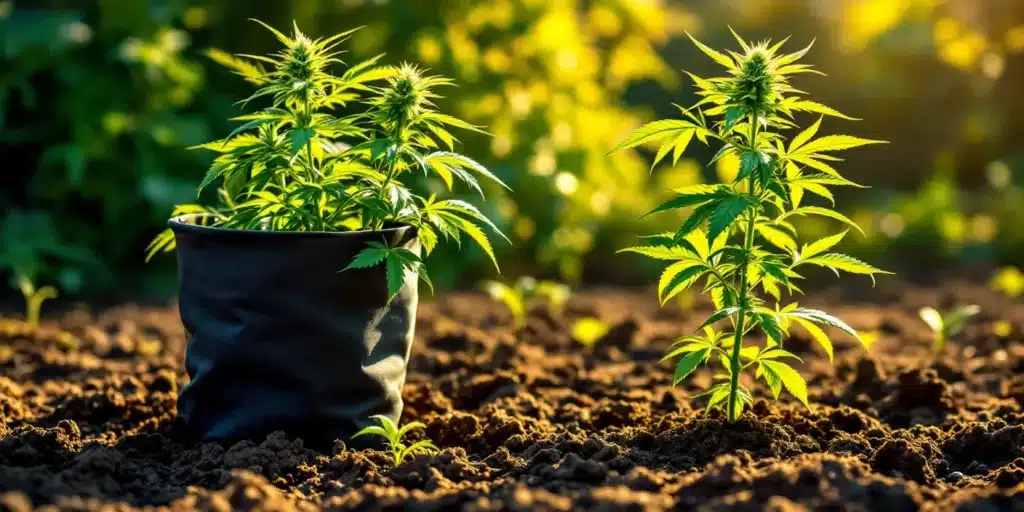
Optimal Environmental Conditions for Weed Seedlings
The right environment is crucial for the survival of weed seedlings. Fluctuations in temperature or incorrect humidity levels can stunt growth or cause seedlings to die. Aim for a humidity level around 60-70% and ensure that there’s adequate airflow to prevent mold and mildew.
Common Challenges During the Seedling Stage
One common issue is “stretching,” where a seedling grows too tall too quickly, usually due to insufficient light. This can make the stem weak and unable to support the plant’s weight. Another challenge is overwatering, which can lead to root rot.
Tips for Monitoring Seedling Health and Growth
Regular checks are essential. Look for signs of pests, nutrient deficiencies, and water levels. Using a magnifying glass to inspect for tiny pests and a moisture meter to check soil dampness can help in taking precise care of the seedlings.
Preparing for Success: What You Need Before Germination
Choosing the Right Seeds: Genetics Matter
The success of growing healthy weed seedlings significantly depends on the genetics of the seeds you choose. Genetics not only determine the potential size, yield, and potency of your cannabis plants but also influence their resilience against pests, diseases, and environmental stresses. Moreover, the genetics of your cannabis can also help in recognizing any abnormalities in growth or effects, which could be crucial when learning how to tell if your weed is laced. Here’s a deeper look into why genetics are crucial and some of the best strains for ensuring vigorous seedlings and robust plant growth.
Cannabis Genetics
Cannabis genetics are typically classified into three main types: indica, sativa, and hybrids. Each type brings unique characteristics:
- Indica strains are known for their short, bushy stature and typically faster flowering times.
- Sativa strains often grow taller, have longer flowering periods, and can offer more energetic effects.
- Hybrids can inherit traits from both indica and sativa varieties, offering a balance that might be suited to specific growing environments or medicinal needs.
The stability of a strain’s genetics is crucial. Stable genetics mean that the seeds will consistently express the desired traits of their parent strains, providing predictability in growth patterns, effects, and yields.
Top Strains for Vigorous Seedlings and Plant Growth
Choosing the right strain is paramount for cultivating robust weed seedlings. Here are some popular strains known for their strong genetics and reliable growth patterns:
- Blue Dream: A sativa-dominant hybrid that is not only easy to grow but also resistant to common pests and molds. It’s known for vigorous growth and a high yield.
- Northern Lights: An indica-dominant strain famous for its resilience and compact growth habit, making it ideal for indoor setups. It’s also known for its rapid flowering times.
- GG4 (formerly Gorilla Glue #4): A potent hybrid that delivers heavy-handed euphoria and relaxation. It’s robust and forgiving to grow, making it suitable for beginners.
- Jack Herer: A sativa-dominant strain named after the legendary cannabis activist. It’s known for its disease resistance and well-suited for growers looking for a challenge with a rewarding yield.
- White Widow: This balanced hybrid is famous for its resilience, making it a great choice for first-time growers. It offers a strong, energetic high and can thrive in various growing conditions.
Adapting to Your Growing Environment
Select strains that are suited to your growing environment. For instance, some strains perform better in cooler northern climates, while others might be adapted to warmer southern conditions. Indoor growers might prefer strains that are known for their shorter stature, whereas outdoor growers might opt for strains that can reach their full potential in natural sunlight.
Final Considerations
Remember, the better the start, the better the finish. Starting with high-quality, genetically stable seeds will set a solid foundation for your entire grow. Investing in good genetics is investing in the future health and productivity of your cannabis plants.
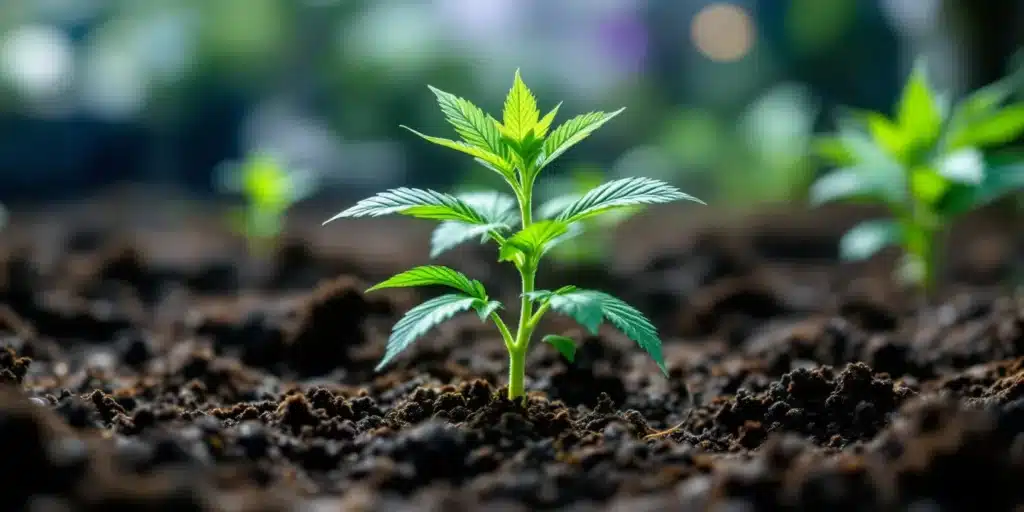
Essential Supplies for Starting Weed Seedlings
You’ll need quality potting soil, a reliable light source suitable for seedlings, and proper containers that allow good drainage. Also, investing in a humidity dome can help in maintaining consistent moisture levels, which are crucial in the early days.
Creating a Germination Friendly Environment
A warm environment with temperatures around 22°C (72°F) is ideal for germination. A heating pad can help maintain this temperature, especially in cooler climates.
Germinating Your Seeds: Best Practices
Successful germination is the first critical step in cultivating healthy weed seedlings. Ensuring that your cannabis seeds sprout correctly sets the stage for a robust growth cycle. Here’s a detailed guide to maximize your success rate during germination:
Choosing the Right Environment
Before you even begin the process of germination, it’s essential to create an environment that encourages seed growth. This environment should be stable and controlled:
- Temperature: Maintain a consistent temperature between 20°C and 25°C (68°F to 77°F). Seeds are sensitive to temperature fluctuations, which can affect germination rates.
- Humidity: Aim for a relative humidity around 70-90%. High humidity helps keep the medium moist and encourages seedlings to emerge.
- Light: Seeds do not require light to germinate. However, once the seedlings emerge, they will need a gentle light source to start photosynthesis.
Selecting Your Germination Medium
You have several options when it comes to selecting a medium for germinating weed seeds. Each has its advantages:
- Soil: Germinating seeds directly in soil is a natural method that avoids the stress of transplanting seedlings since they don’t need to be moved to a growing medium after sprouting.
- Rockwool: Known for its water retention and resistance to mold, Rockwool is a stable medium that provides excellent support for root growth.
- Peat Pellets: These expand when watered and are an easy way to maintain humidity around the seed.
- Water: Soaking seeds in water is one of the simplest methods, suitable for seeds that have a harder shell.
Step-by-Step Guide to Germinating Weed Seeds
Here’s a reliable method to germinate your seeds:
- Pre-soak: Soak your seeds in lukewarm water for 24 to 48 hours. This process helps soften the seed shell and signals the seed to begin the germination process.
- Paper Towel Method: After soaking, place the seeds between moist paper towels and store them in a dark, warm place. Check the moisture level daily and ensure the paper towels remain damp but not saturated.
- Transfer to Soil or Medium: Once the seed’s taproot emerges, gently transfer it to your chosen medium. The taproot should be facing down, and the seed should be buried about 1-2 cm deep.
- Initial Care: Keep the soil or medium moist and cover the pot with a plastic wrap to retain humidity. Remove the cover once you see the seedlings emerge.
Monitoring and Adjusting Conditions
As your seeds begin to sprout, monitor their environment closely:
- Moisture: Overwatering can drown your sprouts, while underwatering can dry them out. Aim for a consistent light moisture level.
- Temperature: Use heating mats if necessary to maintain an optimal temperature, especially in colder climates.
- First Signs of Growth: Once the seedlings appear, remove any domes or covers to allow for air circulation. Introduce a gentle light source to encourage growth.
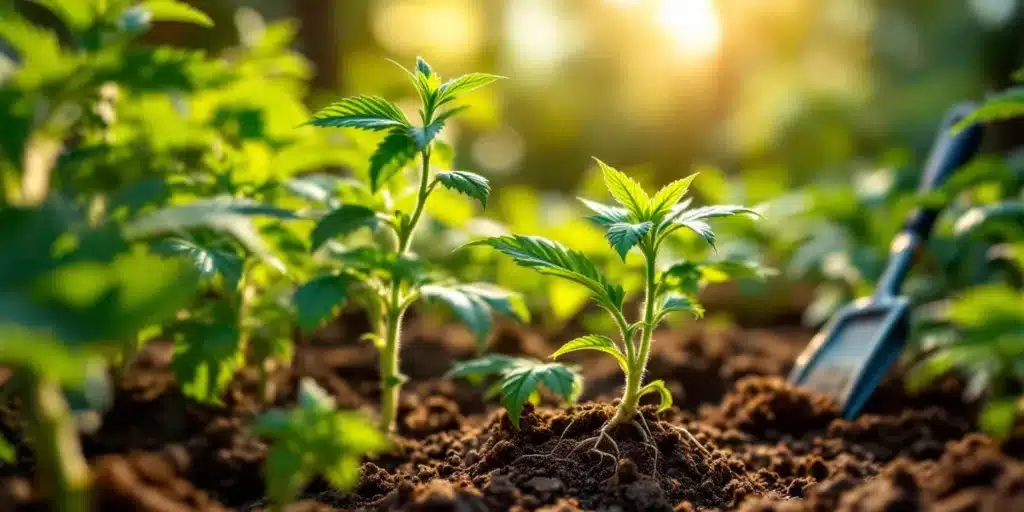
Troubleshooting Poor Germination Rates
If you notice low germination rates, consider the following adjustments:
- Seed Quality: Older seeds or those stored in poor conditions may have lower viability.
- Water Quality: Chlorinated tap water can inhibit germination. Use filtered or distilled water if possible.
- Depth: Planting seeds too deep can make it hard for the sprout to reach the surface. Similarly, very shallow planting may not provide enough support for the seedling.
By following these best practices, you can increase the likelihood of a successful germination, setting a solid foundation for your weed seedlings to grow strong and healthy. This careful start is crucial for ultimately achieving robust and productive cannabis plants.
Post-Germination Care: The First Two Weeks
Watering Techniques for Young Seedlings
Use a spray bottle to mist the seedlings lightly. Over-watering can be detrimental at this stage, so ensure the soil is damp but not wet. Allow the top layer of soil to dry out slightly before watering again to encourage root growth.
How Humidity Affects Early Seedling Development
Maintaining high humidity helps prevent the delicate seedlings from drying out. A humidity dome or a simple plastic cover can help manage the environment effectively.
Adjusting Light for Optimal Growth
Seedlings need plenty of light but it should be gentle. Fluorescent lights or specifically designed LED grow lights are perfect as they can provide ample light without excessive heat that could damage the plants.
When to Transplant Weed Seedlings
Recognizing the Signs That Your Seedlings Are Ready to Move
Seedlings are ready to transplant when they have developed 2-3 sets of true leaves and have outgrown their initial containers. The roots should be well-formed but not circling extensively within the pot.
How to Safely Transplant Weed Seedlings
Carefully remove the seedling from its current container, minimizing disturbance to the roots. Transplant into a larger pot filled with high-quality soil. Make the transition gradually if moving seedlings outdoors, to avoid shock from the new environment.
Post-Transplant Care Tips
After transplanting, seedlings will need a few days to adjust. Continue with gentle watering and provide light shade if moved outdoors, gradually exposing them to more direct sunlight over several days.
Nutrition and Feeding Requirements
Nutrient Needs During the Seedling Stage
Weed seedlings require minimal nutrients during the early stages of their growth. Overfeeding can damage delicate roots and hinder growth. Initially, the nutrients contained within the seed itself are adequate until the first few true leaves appear. At this point, a mild, balanced fertilizer can be introduced at reduced strength.
Organic vs. Synthetic Nutrients: What’s Best for Seedlings?
Organic nutrients are often recommended for cannabis seedlings because they are less likely to cause nutrient burn and improve the soil’s health by promoting beneficial microbial activity. Synthetic nutrients, while more immediately accessible to plants, should be used with caution and in diluted forms to avoid overwhelming young plants.
Feeding Schedules and Dosages for Optimal Growth
A light feeding schedule is crucial. Begin with a quarter strength of recommended dosages and gradually increase as the plant matures. It’s essential to monitor the plant’s response to each feeding and adjust accordingly.
Protecting Your Seedlings from Common Threats
Identifying and Managing Pests and Diseases
Common pests like spider mites, aphids, and fungus gnats can be detrimental to seedlings. Regular inspections and keeping the grow area clean are vital preventive measures. For diseases, proper air circulation and avoiding overly damp conditions can help prevent outbreaks of mold and mildew.
How to Deal with Mold and Fungus Issues
Mold and fungus thrive in moist environments. Reducing humidity around the seedlings and ensuring that the soil is not waterlogged are effective strategies. If mold or fungus is detected, it’s important to remove affected parts immediately and possibly apply a suitable organic fungicide.
Physical Barriers and Natural Remedies for Protection
Physical barriers, such as row covers or screens, can protect seedlings from insects and environmental stress. Natural remedies like neem oil can also be used as a safe pesticide alternative that won’t harm young plants.
Advanced Techniques for Boosting Seedling Growth
Using Mycorrhizae and Beneficial Bacteria
Incorporating mycorrhizae and beneficial bacteria into the soil can significantly enhance nutrient uptake and protect against root diseases. These symbiotic organisms help create a more robust root system, which is crucial for healthy seedling development.
Techniques like Topping and Training Young Plants
While typically applied later in the plant’s life, gentle training techniques like low-stress training (LST) can begin once the plant has several sets of true leaves. This can encourage more lateral growth, making the plant bushier and better able to capture light.
CO2 Enrichment in Early Plant Development
Adding CO2 to the growing environment can accelerate growth by boosting photosynthetic activity. However, this is usually more appropriate in controlled environments like grow tents or greenhouses where CO2 levels can be carefully monitored.
The Transition to Vegetative Stage: What to Expect
Timing the Transition: Key Indicators
As seedlings mature, they will begin to grow more rapidly, indicating readiness to transition to the vegetative stage. This shift typically occurs after 3-4 weeks, depending on the strain and growing conditions.
Adjustments in Care as Plants Mature
As plants enter the vegetative stage, they require more light (up to 18 hours per day), increased nutrients, and more water. This is also the time to start training techniques to shape the plant’s growth effectively.
Preparing for the Increase in Nutritional Demands
The nutrient demand will significantly increase as the plant enters the vegetative stage. Transitioning to a nutrient solution formulated for vegetative growth will support this new phase of development.
FAQs: Expert Answers to Your Weed Seedling Questions
How often should I water my weed seedlings?
Watering frequency depends on several factors, including humidity, temperature, and the growth medium. Generally, weed seedlings should be watered when the top inch of soil feels dry to the touch. Overwatering can lead to root issues, so it’s essential to ensure the soil has good drainage.
Can LED lights be too intense for weed seedlings?
While LED lights are excellent for cannabis cultivation due to their efficiency and spectrum range, they can be too intense for weed seedlings if placed too close. It’s advisable to start with the lights higher up and gradually lower them as the seedlings grow stronger.
What are the signs of nutrient deficiency in seedlings?
Nutrient deficiencies in weed seedlings often manifest as discoloration of the leaves. For instance, nitrogen deficiency might cause the leaves to turn yellow, while a lack of potassium can lead to brown edges on the leaves.
How long does the seedling stage last for weed seedlings?
The seedling stage for weed seedlings typically lasts about 2-3 weeks. During this time, the plants develop their initial set of true leaves and begin to establish a stronger root system.
What is the best soil mix for weed seedlings?
A light, airy soil mix with good drainage is best for weed seedlings. It should ideally contain a mix of peat, perlite, and vermiculite to ensure that the young roots can grow freely and access the necessary oxygen.
Is it necessary to use a humidity dome for weed seedlings?
Using a humidity dome can help maintain the ideal humidity levels for weed seedlings, especially in dry environments. It helps prevent the delicate seedlings from drying out too quickly.
What is the ideal temperature range for growing weed seedlings?
Weed seedlings thrive in temperatures between 20-25°C (68-77°F). Extreme temperatures can hinder growth or even damage the seedlings.
How can I protect my weed seedlings from pests?
Keep your growing area clean, and monitor regularly for any signs of pests. Introducing natural predators like ladybugs or using organic neem oil can help control pest populations without harming the seedlings.
Should weed seedlings be exposed to direct sunlight?
Direct sunlight can be too harsh for young weed seedlings. If growing outdoors, provide some shade to protect them from intense midday sun. Indoors, use grow lights that can mimic the sun’s spectrum without overheating the plants.
How do I know if my weed seedlings are getting enough light?
If weed seedlings are not getting enough light, they will begin to “stretch” or grow tall and thin rather than developing a sturdy stem. Ensure your light source is close enough to prevent stretching but not so close that it causes heat stress.
What should I do if the leaves on my weed seedlings start curling?
Curling leaves can be a sign of several issues, including water stress (both over and under-watering), excessive heat, or wind stress. Assess the environment and make necessary adjustments, ensuring that your watering schedule and temperature are optimal for weed seedling growth.
When is the best time to start feeding nutrients to weed seedlings?
It’s best to wait until the seedlings have developed 2-3 sets of true leaves before introducing nutrients. Start with a diluted nutrient solution to avoid overwhelming the young plants.
By addressing these frequently asked questions, you can better manage the care of your weed seedlings and ensure they grow into healthy, vigorous plants.

